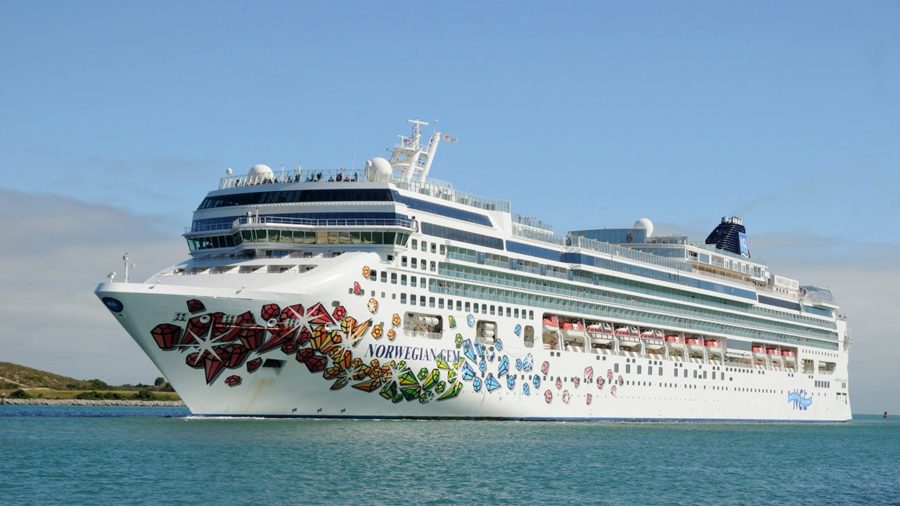Cruise Ships and COVID-19
Cruise ships like the Norwegian Gem have been forced to cancel voyages because of COVID-19 outbreaks on board.
January 19, 2022
At the start of the pandemic in March 2020, cruise ships were forced to shut down to prevent the spread of COVID-19. When the Diamond Princess had a major COVID-19 outbreak on board, which, according to The Guardian, infected nearly 700 of the 3711 passengers, governments around the world started closing down ports to prevent cruise ships from docking and infected passengers from entering foreign areas. In response to this, many cruise lines began to close down and suspend their sailings. However, some cruises continued to sail, only to result in numerous COVID-19 cases onboard. The last ship to sail with passengers was the MV Artania, which, according to CNN, docked with 8 passengers in June 2020 (the other passengers tested positive and were disembarked).
Although cruise lines stopped sailing with passengers, many crew members remained on board the ships in isolation. Fox News states that at least 42,000 crew members were stuck on the ships because they have been infected or ports are concerned about letting the workers into their countries. Consequently, numerous efforts have been made to return the workers back to their home countries. For example, MSC Cruises and Royal Caribbean have flown many of their workers back to their home countries after letting them off at ports that have allowed them to dock.
After over a year after not sailing with passengers, cruise lines started to reopen their services in July 2021. The Washington Post states that Royal Caribbean International’s Freedom of the Seas became the first cruise ship to complete a test run followed by a voyage with passengers. Many other cruise ships followed in suit shortly after. To help limit potential spreads of COVID-19, cruise passengers were required to be vaccinated, have a negative COVID-19 test before boarding, wear a mask while not actively eating or drinking, and practice social distancing. Many cruise lines also sailed at a limited capacity, such as half the normal number of passengers.
Despite these measured being followed, many cruise lines have still had COVID-19 outbreaks on board. After a few months of sailing, most cruise ships have not had many problems with outbreaks amongst passengers. However, numerous cruises over the past few weeks have been canceled because of the rapid spread of COVID-19 onboard many vessels. For instance, Celebrity Cruises canceled four upcoming cruises after pushing back its date to resume sailing. Additionally, Norwegian Cruise Line’s Norwegian Gem was forced to return back to New York mid-voyage after a surge of COVID-19, and the company has further canceled numerous other cruises through April 2022. Juliana Neemeh (11) thinks that “canceling cruises seems like the right thing to do to protect the health and safety of passengers, but if [her] cruise got canceled, [she] would definitely be upset.”
The repeated cancelation of cruises has led many people to wonder what will happen to the cruise line industry. The Centers for Disease Control has discouraged people from boarding cruise ships even though many cruise ships continue to sail. Many future cruises, such as Oceania Cruises’ world cruise in 2023, are already beginning to sell out despite the uncertainty revolving around the industry. Since COVID-19 will certainly not be going away anytime soon, it is impossible to predict what the cruise line industry will look like in the future. All we do know is that it will be a while if cruise ships ever go back to how they operated during pre-pandemic times.



































